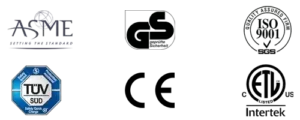The competition in the air compressor industry has become fierce, and the requirements for the energy-saving effect of air compressors are getting higher and higher. Under this trend, there are more and more inverter models. Here I will tell you some tips about inverters.
Inverter’s requirements for power supply
When you look at some large inverters, you will see two ports marked with “+” and “-,” and often, these two ports have warning signs. Note that the voltage here will be huge. It belongs to the direct current, the scientific name of the bus voltage, which is converted from the input three-phase power. Then, what happens if there is a problem with the three-phase power you input? For example, some frequency conversion machines input the correct three-phase voltage. However, the inverter will still report an overvoltage or low voltage fault. This is often caused by the wrong three-phase electric waveform and the converted bus voltage. The inverter will detect the three-phase voltage but also notice the two-phase. The standard bus voltage is about twice the root of the three-phase voltage.
Can frequency converters change energy efficiency?
Everyone knows that variable frequency machines can change the frequency to meet different output requirements, thereby avoiding waste. But how can the energy efficiency of the frequency converter be the same at the low frequency? The energy efficiency of the frequency conversion model is inferior at the lowest frequency. To explain this problem, we must start with the operational mode of the frequency converter on the air compressor.


